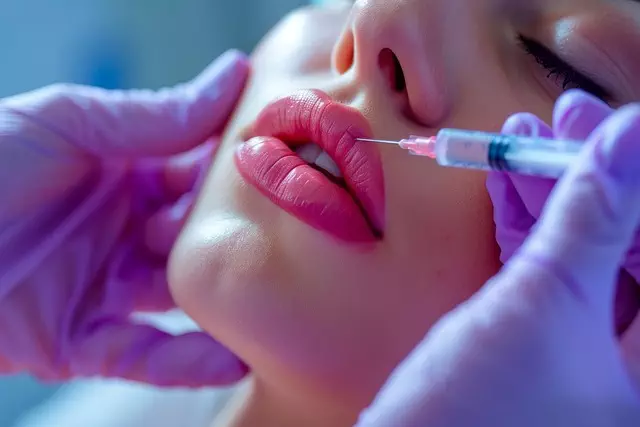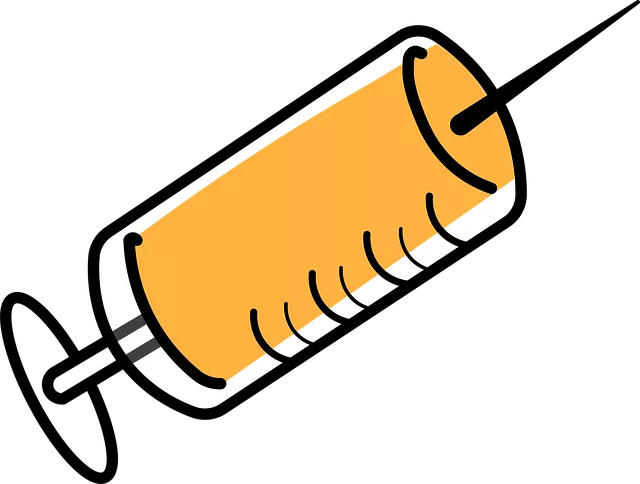Botox injections have gained popularity as a safe and effective treatment for crow's feet, addressing fine lines around the eyes. This non-surgical procedure involves injecting botulinum toxin into specific muscles to temporarily paralyze them, reducing muscle contractions and minimizing wrinkles. With minimal downtime, Botox offers a natural alternative to surgery, providing 3-6 months of results. While some avoid it due to safety concerns, Botox is FDA-approved and rarely causes serious side effects when administered by a qualified professional. Proper aftercare, including cleaning, moisturizing, and avoiding strenuous activities, ensures optimal results and minimizes potential risks. Choosing the right provider with experience and current techniques is crucial for achieving desired outcomes.
“Uncover the secrets to erasing crow’s feet with Botox injections—a popular non-surgical treatment gaining traction worldwide. This comprehensive guide delves into the science behind Botox, its mechanism in targeting fine lines and wrinkles, and its role in revolutionizing skincare routines. From understanding the causes of crow’s feet to navigating the procedure step-by-step, this article empowers you with knowledge. Discover the benefits, dispel myths about safety, and learn how to choose an expert provider for optimal results. Embrace a youthful glow with informed decisions on Botox injections.”
Understanding Crow's Feet: Causes and Impact

Crow’s feet, the fine lines that crinkle around the eyes and mouth, are a natural sign of aging. They get their name from their resemblance to the feet of a crow, with their intricate webbing. While they may initially appear as subtle wrinkles, over time, these lines can become more pronounced, leading to an appearance of fatigue or worry. Understanding the causes behind crow’s feet is crucial when considering aesthetic treatments like Botox injections.
These wrinkles are primarily caused by repeated muscle contractions, a natural process that occurs as we express emotions and age. The constant contraction and relaxation of facial muscles lead to weakening of the skin’s supporting structure, resulting in the formation of these fine lines. Botox injections work by temporarily paralyzing these overactive muscles, thereby reducing the frequency and intensity of muscle contractions and minimizing the appearance of crow’s feet.
What is Botox? A Comprehensive Overview

Botox, or botulinum toxin, is a protein produced by a specific type of bacteria. When used in aesthetic procedures, such as treatments for crow’s feet, it’s primarily injected into the skin to temporarily paralyze specific muscles. This disruption prevents the muscles from contracting, which reduces dynamic wrinkling over time.
Botox injections have become a popular non-surgical option for those seeking to minimize fine lines and wrinkles around the eyes. It offers a minimally invasive approach with minimal downtime, making it an attractive choice for individuals looking to enhance their appearance without extensive procedures.
How Botox Injections Work for Crow's Feet

Botox injections have emerged as a popular and effective treatment for crow’s feet, those delicate lines that form at the corners of the eyes. The procedure involves administering a small amount of Botox into specific muscles around the eye area. This powerful neurotoxin temporarily paralyzes the muscles, which in turn reduces the frequency and intensity of muscle contractions. By preventing these contractions, Botox prevents the repeated friction and creasing of skin, thereby minimizing the appearance of fine lines and wrinkles over time.
The result is a smoother, more youthful-looking complexion around the eyes. Many individuals observe improvements after just a few sessions, with effects lasting anywhere from 3 to 6 months. This non-invasive approach makes Botox injections an attractive alternative to surgical procedures for those seeking a natural way to combat signs of aging.
The Benefits of Non-Surgical Treatments

Non-surgical treatments like Botox injections have gained significant popularity due to their ability to offer both immediate and long-lasting results with minimal downtime. Unlike surgical procedures, which often come with risks, scars, and lengthy recovery periods, Botox provides a safe and effective way to reduce the appearance of crow’s feet and fine lines without any incisions. It achieves this by relaxing the muscles that cause wrinkles, resulting in smoother, more youthful-looking skin. Furthermore, Botox is highly customizable, allowing practitioners to tailor treatments to individual needs, ensuring natural-looking results. This approach not only addresses cosmetic concerns but also boosts self-confidence, making it a preferred choice for many seeking to combat signs of aging discreetly and effectively.
Safety and Effectiveness: Myths vs. Reality

Many people are hesitant to consider Botox injections for crow’s feet due to concerns over safety and effectiveness, often fueled by myths and misinformation. It’s important to dispel these fears based on facts. Botox is a highly purified protein that, when injected into specific muscles, temporarily paralyzes them, preventing the contraction that causes those telltale wrinkles around the eyes. This FDA-approved treatment has been used for decades and has an excellent safety profile when administered by a qualified professional.
While it’s true that any medical procedure carries some risks, serious side effects from Botox are extremely rare. Common temporary side effects may include mild bruising, swelling, or headaches at the injection site, but these usually resolve quickly. When managed by experienced hands, Botox injections offer a safe and effective way to minimize crow’s feet without invasive surgery or lengthy recovery times.
The Procedure: Step-by-Step Guide

The procedure for Botox injections to treat crow’s feet typically involves several steps. First, a consultant will assess your facial structure and skin condition to ensure Botox is the right choice for you. They’ll clean the treatment area and apply a topical anesthetic to minimize any discomfort during the injection process. Next, they’ll use fine needles to inject small amounts of Botox into the specific muscle groups responsible for frowning or squinting, which are often the main contributors to crow’s feet.
After the injections, a cool compress may be applied to reduce any swelling or bruising. You’ll be able to return to your normal activities immediately, but it’s recommended to avoid strenuous exercise or extreme temperatures for a few hours. It’s crucial to follow aftercare instructions provided by your consultant to ensure optimal results and minimize any potential side effects.
Recovery and Aftercare Tips

After your Botox injections for crow’s feet, it’s important to take care of your skin to ensure optimal results and minimize any potential side effects. During the recovery period, keep the treated area clean and moisturized. Avoid strenuous activities or excessive facial expressions that may cause discomfort or temporary bruising.
Apply a gentle, fragrance-free moisturizer around the eyes to hydrate the skin without irritating it. Protect your face from direct sunlight by wearing sunglasses and using broad-spectrum sunscreen with at least SPF 30. Be mindful of what you eat and drink—opt for cold, smooth foods and stay hydrated to reduce swelling. Avoid alcohol consumption as it can cause dehydration and potential bruising. Lastly, give your face time to heal; results may take a few days to become fully visible, so be patient and follow your dermatologist’s aftercare instructions precisely.
Potential Side Effects and Risks to Be Aware Of

Botox injections for crow’s feet can be an effective treatment, but like any medical procedure, there are potential side effects and risks to be aware of. Common temporary side effects include mild bruising, swelling, or discomfort at the injection site. In rare cases, patients may experience more severe allergic reactions or headaches. It’s important to choose a qualified and experienced provider to minimize these risks.
Additionally, Botox is not a permanent solution, and its effects typically last between 3-6 months. Repeated treatments are necessary to maintain results. While the procedure is generally safe, it’s crucial to discuss any underlying medical conditions or allergies with your doctor before undergoing Botox injections.
Choosing the Right Provider for Botox Injections

When considering Botox injections for crow’s feet, choosing the right provider is paramount for achieving optimal results and minimizing risks. It’s crucial to select an experienced and board-certified dermatologist or plastic surgeon with a proven track record in cosmetic procedures. Look for practitioners who stay current on the latest techniques and product offerings, as advancements in Botox can lead to more natural-looking outcomes.
Reputation is key; seek recommendations from friends or family members who have had similar treatments. Online reviews can also provide valuable insights into a provider’s skill and patient satisfaction. Additionally, ensure that the practice follows strict sterile procedures and uses pre-filled, single-use vials to prevent contamination. A consultation should be your first step, where you discuss your concerns, expectations, and any medical history that might affect treatment.



